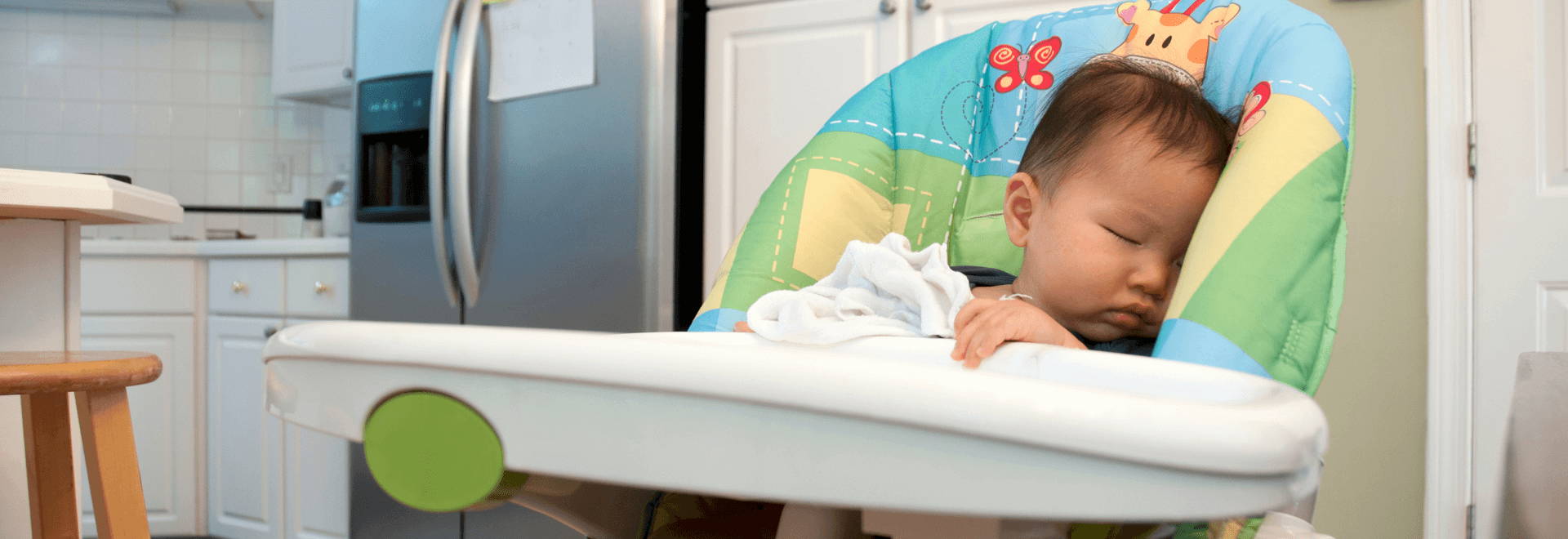EMMA
Apr 17, 2023
Mastering Naptime: A Parent's Guide to Fostering Healthy Napping Habits for Baby's Growth and Development
As a parent, I know the joys and challenges of nurturing our little ones through the early years, and one key aspect of their growth and development is mastering the art of naptime. Establishing healthy napping routines is not only vital for our babies' cognitive, emotional, and physical well-being but also provides us, as parents, with some much-needed downtime.
I'm excited to share my experience and insights with you in this article. From understanding the science of baby sleep to creating a soothing environment and maintaining consistency, we'll explore practical tips and strategies that can make naptime a positive experience for both you and your little one.

Establishing Healthy Napping Routines
Establishing a healthy nap routine for your baby can be a game-changer when it comes to promoting healthy sleep habits. With a little bit of patience and flexibility, you can create a consistent and nurturing routine that benefits both you and your little one. Here are some practical tips to help you get started:
First and foremost, it's important to pay attention to your baby's sleep cues. Yawning, rubbing their eyes, fussiness, and decreased activity are all signs that your baby may be getting sleepy. Recognizing these signals and responding promptly can make it easier for your baby to settle down for a nap.
Once you've identified your baby's sleep cues, aim to create a consistent nap schedule that fits their age and individual needs. Keep in mind that every child is unique, and some may require adjustments to their schedule. Stay flexible and be willing to adapt the schedule as needed to suit your baby's changing sleep needs.
To help your baby wind down before naptime, develop a calming pre-nap routine that includes soothing activities such as reading, singing a lullaby, or cuddling. Keep the routine short and consistent to create a peaceful environment that encourages sleep.
Make sure your baby's sleep environment is comfortable and conducive to restful naps. Keep the room cool, dark, and quiet, and consider using white noise or blackout curtains to minimize disruptions. Providing a familiar sleep setting can help your baby feel secure and more likely to settle into a nap.
Teaching your baby to self-soothe can also be helpful. Offer a comfort item like a small blanket or stuffed animal and provide gentle reassurance as needed. Remember that learning to self-soothe takes time and patience, so be prepared for some trial and error.
Establishing a successful napping routine is an ongoing process that may require adjustments as your baby grows and develops. Stay patient, be willing to adapt, and remember that consistency is crucial. With time, your baby will become more comfortable with napping, and you'll both reap the benefits of a well-established routine.
Lastly, if your child attends daycare or spends time with other caregivers, it's crucial to maintain open communication about your child's nap schedule and routine. Sharing information about your child's sleep habits and preferences can help ensure a consistent approach and support their naptime success.
Common Nap Issues and Solutions

One common issue is short naps or catnaps. It's important to remain patient and consistent with a calming pre-nap routine and a comfortable sleep environment. Some babies may naturally have shorter naps, but if you're concerned, consult with your pediatrician.
Another common issue is resisting naps. This can be caused by overtiredness, overstimulation, or an uncomfortable sleep environment. To overcome this, maintain a consistent nap schedule and ensure your baby is getting enough age-appropriate awake time between naps.
Sleep regression is a temporary phase when your baby's sleep patterns change, resulting in more frequent awakenings or difficulty settling. During these times, maintain consistency in your nap routine and be patient as your baby adjusts. Sleep regression typically resolves on its own, but if you're concerned, seek advice from your pediatrician.
As your baby grows and develops, they will naturally transition from multiple naps to fewer naps per day. Pay attention to their sleep cues and developmental milestones to identify when it's time to adjust their nap schedule. Transitioning between nap schedules can take time, so be patient and flexible as your baby adapts.
If you find that naps are interfering with your baby's nighttime sleep, it may be necessary to adjust their nap schedule. Ensure they're not napping too close to bedtime, and consider shortening their daytime sleep if needed. Always consult with your pediatrician if you're unsure about the best approach for your child's sleep needs.
Inconsistent napping can result from various factors, such as travel, illness, or disruptions to your baby's routine. During these times, try to maintain as much consistency as possible with their nap schedule and pre-nap routine. Be patient, as it may take some time for your baby to return to their regular nap pattern.
Remember, every baby is unique and may have different nap needs. The key is to be patient, consistent, and observant of your baby's cues to ensure they are getting the restful sleep they need for their growth and development.
Age-Appropriate Nap Schedules
Newborns (0-3 months)
During the first three months of life, newborns need plenty of rest and will typically nap every 1.5 to 2 hours during the day. Keep in mind that their sleep patterns may be irregular, so it's essential to pay attention to their sleep cues and offer them opportunities to rest.
Infants (3-6 months)
As infants mature, they tend to sleep for longer periods and take fewer naps throughout the day. At this age, babies generally require 3 to 4 naps, lasting between 30 minutes to 2 hours each. Be on the lookout for signs of tiredness and aim to put your baby down for a nap before they become overly exhausted.
Older infants (6-9 months)
Between 6 and 9 months, most babies start to follow a more structured nap schedule, with 2 to 3 naps per day. You'll usually see morning and afternoon naps, with some infants still needing a shorter late afternoon or early evening nap.
Toddlers (9-18 months)
From 9 to 18 months, most toddlers transition to 1 to 2 naps per day, with the morning nap gradually phasing out. The remaining nap(s) tend to be longer, lasting between 1 to 3 hours. It's crucial to establish an appropriate bedtime routine to prevent overtiredness, which can lead to sleep problems.
Preschoolers (18 months-3 years)
Between 18 months and 3 years, most children consolidate their naps into one longer nap, usually in the early afternoon and lasting between 1 to 3 hours. This pattern allows for plenty of awake time before bedtime.
While these age-appropriate nap schedules provide a helpful starting point, remember that each child is different and may require adjustments to meet their individual sleep needs. Observe your child's sleep cues and seek guidance from your pediatrician if you're concerned about their sleep habits.
The Transition from Multiple Naps to One

As your child grows, they will naturally progress from multiple naps to a single daily nap. Firstly, it's crucial to keep an eye out for signs that your child is ready to drop a nap, such as skipping a nap consistently, taking longer to settle down, or waking up earlier from their naps. However, temporary sleep disruptions like teething or illness may not necessarily indicate that your child is ready to transition to fewer naps.
Once you've identified the signs, gradually adjust your child's nap schedule by pushing their morning nap later by 15 to 30 minutes every few days. This allows them to adjust to the change slowly and steadily. However, keep in mind that consistency and adaptability are essential to make this transition successful.
During the transition, it's essential to ensure that your child gets enough sleep throughout the day. Observe their overall sleep needs and adjust their bedtime accordingly if necessary. If your child is struggling with the transition, a short late afternoon nap could help bridge the gap.
Maintain a consistent nap routine by creating a soothing pre-nap routine, ensuring a comfortable sleep environment, and sticking to a predictable schedule that signals to your child that it's time for their daily nap. This helps your child feel secure and relaxed during this time of change.
Remember that the transition from multiple naps to one can take time. Be patient and flexible, and don't be alarmed if your child needs an extra nap on some days. Keep an eye on their mood, behavior, and overall well-being and consult with your pediatrician if you have any concerns or need personalized guidance.
As we navigate the ups and downs of naptime, we not only foster healthy sleep habits but also create a strong foundation for our children's lifelong growth and development. By providing a nurturing and supportive environment for our children to rest and recharge, we give them the gift of resilience, emotional well-being, and cognitive abilities that will serve them well into the future. So, take a deep breath, embrace the challenges and triumphs of naptime, and cherish the precious moments spent with your child as they drift off to sleep in your loving arms.
